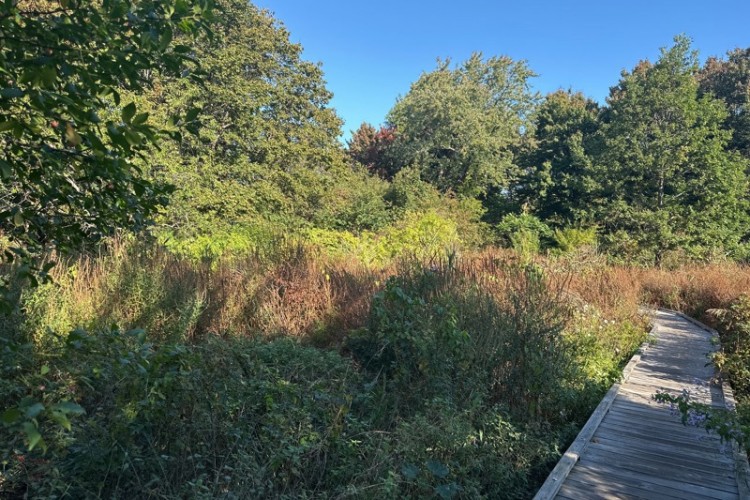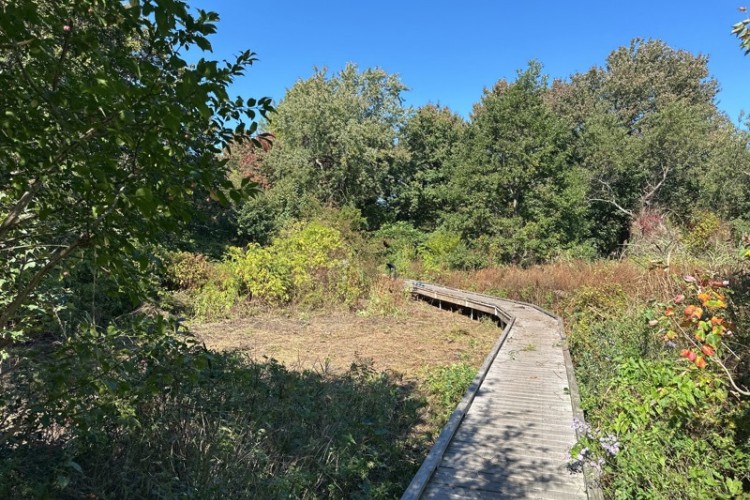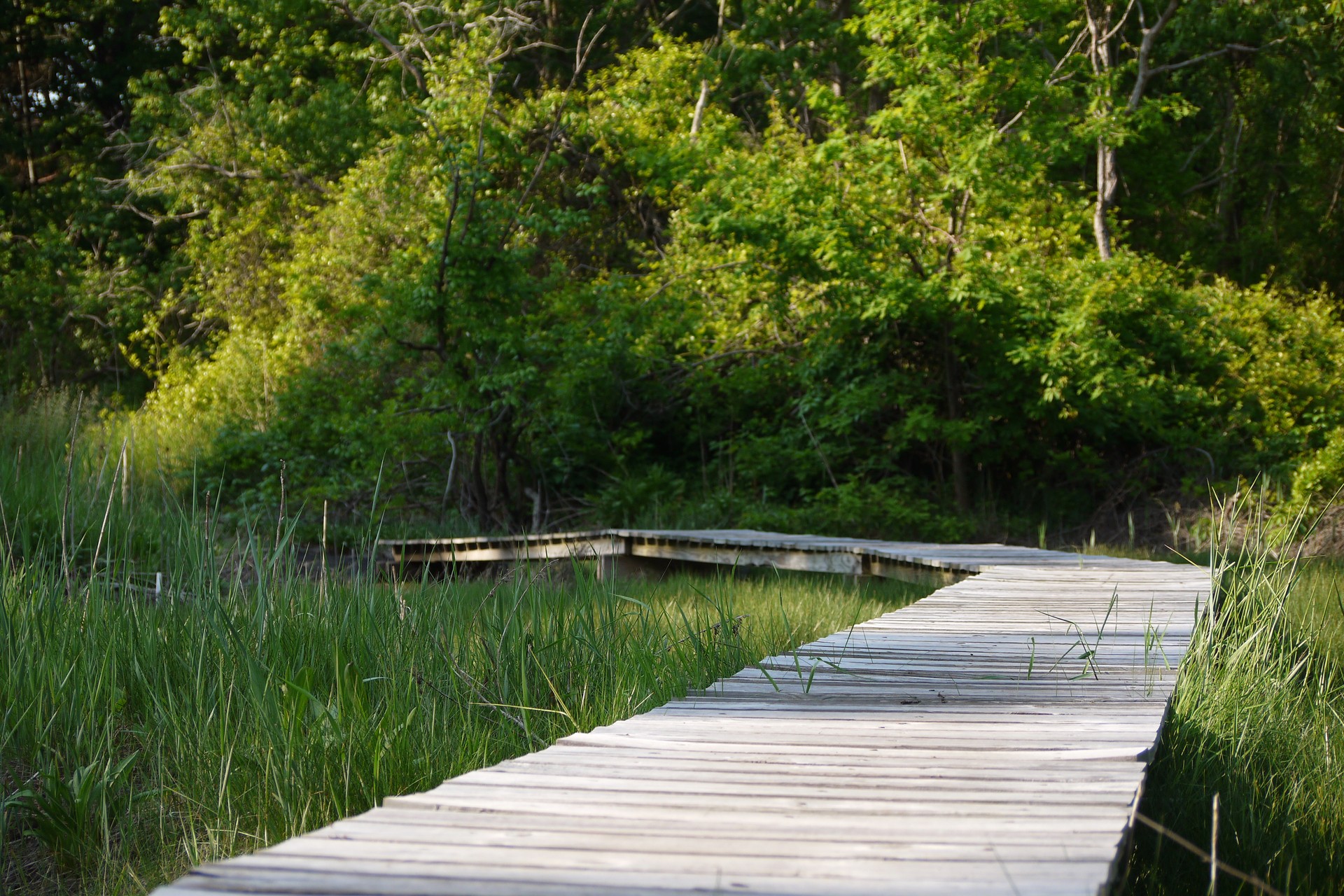Even the smallest places can make a big difference for wildlife. At Mass Audubon’s Nahant Thicket Wildlife Sanctuary in Nahant, property, science, and restoration staff teamed up with local volunteers to remove invasive plant species and prepare the ground for more than 300 native plantings—a major step toward restoring the ecological balance of this unique coastal sanctuary.
Though the team cleared just 0.16 acres, that’s significant in a sanctuary that spans only four acres. Nahant Thicket may be small, but it’s a vital stopover for migrating birds that rely on native fruits and insects to refuel during their journeys. Every square foot of healthy habitat here counts.
Battling Invasives to Boost Biodiversity
Mass Audubon’s salt marsh restoration team and a handful of dedicated local volunteers tackled a range of invasive plants—including Purple Loosestrife, Japanese Knotweed, Common Reed, and Oriental Bittersweet—that had spread aggressively through parts of the sanctuary.
Left unchecked, these introduced species form dense monocultures, crowding out native plants by robbing them of soil nutrients and sunlight. That loss of plant diversity cascades through the ecosystem, offering less nutritious food sources for birds and pollinators. For migrating birds, that can mean the difference between finishing their journey or not.
Planting the Seeds of Renewal
Later in the week, the team began replanting with a mix of native species already well adapted to the area—including tulip trees, dogwoods, highbush blueberry, spicebush, rhodora, elderberry, sneezeweed, and boneset. Each plant contributes to rebuilding a diverse, resilient habitat that supports native birds, insects, and other wildlife.

Before Invasive Purple Loosestrife Removal

After Invasive Purple Loosestrife Removal
A Collective Effort for Conservation
The restoration effort reflects Mass Audubon’s broader commitment to protecting biodiversity and maintaining the ecological integrity of Massachusetts habitats. Whether through large-scale marsh restoration or small but mighty projects like this one, each invasive species removal is a step toward a healthier landscape.
This work shows what can happen when Mass Audubon and community members come together with a shared goal. Every volunteer who helps remove invasives or plant natives contributes to the future of this sanctuary—and the wellbeing of the wildlife that depends on it.
How You Can Help
Take Action at Home
Once you start recognizing invasives like knotweed or swallowwort, you’ll see them everywhere—and you’ll understand just how important this work is. Learn to identify invasive plants in your own yard and replace them with native species to support local biodiversity. Get Mass Audubon's Invasive Plant Guide
Visit Nahant Thicket
This hidden gem offers incredible birdwatching opportunities, especially during migration seasons. See this critical habitat work in action by exploring the trail and watching traveling birds fuel up on much needed native species. Visit Nahant Thicket
Volunteer
None of this work would be possible without the people that cared deeply enough about their local lands and wildlife to take action and lend a hand. Join an invasive species removal project at a nearby Mass Audubon sanctuary to do your part, too.
Stay Connected
Don't miss a beat on all the ways you can get outdoors, celebrate nature, and get involved.



